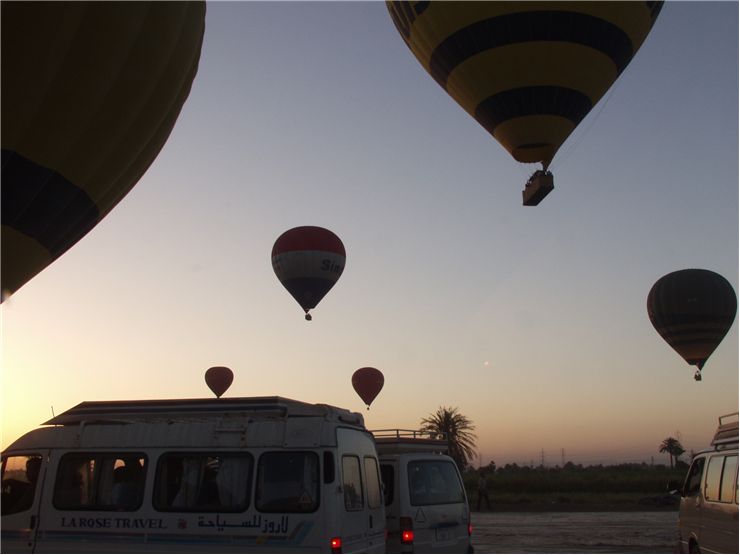First Balloon Flights
Balloons are the simplest of all flying machines. They are lighter than aircrafts that gain their lift through the use of a buoyant gas and are, basically, airtight bags filled with hot air, helium or (rarely) hydrogen which holds them in the air. Underneath the balloon is tied a basket, gondola or capsule which carries people, animals, or automatic equipment.
Balloons as a flying machines are old. The first one appeared in China in the 3rd century AD but as small toys. It wasn’t until the 18th century and experiments with unmanned flight that the first balloons appeared. The first unmanned flight that carried living creatures happened on 19 September 1783. On that day, Montgolfier brothers Joseph-Michel and Jacques-Etienne, flew their hot air balloon “Aerostat Réveillon” with its passengers - a sheep, a duck and a rooster. This flight happened before a crowd at the royal palace in Versailles, and before King Louis XVI of France and Queen Marie Antoinette. Balloon was in the air some eight minutes, crossed the distance of 3km, and obtained an altitude of 460m. It also proved that living things can survive the flight so it was time for human passengers. The first tethered balloon flight (where a balloon is tied to the ground) of a Montgolfier balloon with humans on board happened on October 19, 1783. The first humans in the air were scientist Jean-François Pilâtre de Rozier, the manufacture manager, Jean-Baptiste Réveillon and Giroud de Villette. After that, Montgolfier brothers tried a free flight with human passengers on 21 November 1783. King Louis XVI had an idea that condemned criminals should be the first passengers and pilots but Jean-François Pilâtre de Rozier and Marquis François d'Arlandes succeeded to convince him that it should be them. Flight lasted 25 minutes and balloon crossed the distance of 8km. They had fuel to fly four to five times as far but fire threatened to engulf the balloon so they safely landed. This type of balloon is being named Montgolfière after the brothers.
The first manned hydrogen balloon was launched only a few days after, on December 1, 1783, by Professor Jacques Charles and the Robert brothers. They launched the balloon from the Jardin des Tuileries in Paris with Jacques Charles and Nicolas-Louis Robert on board. Their flight lasted 2 hours and 5 minutes and covered 36km. Second flight was just after the first. Jacques Charles flew alone to an altitude of 3,000m. Balloon using hydrogen for its lift came to be called a Charlière in his honor.
Balloons were first in many things after these first steps. Jean-Pierre Blanchard was the first to fly across the English Channel, on January 7, 1785. Balloon was also the first to have an aircraft disaster. In May 1785, balloon crashed in the town of Tullamore, Ireland and burned down some 100 houses. The first manned flight of a balloon in America was launched on January 10, 1793 by Jean-Pierre Blanchard. French were the first to use a tethered hydrogen balloon in a war, namely to observe the movements of the Austrian army during the Battle of Fleurus in 1794. Henri Giffard flew the first steerable balloon (so called “dirigible”) in 1852. The first tethered internal combustion motor-powered balloon appeared in 1872.
Hydrogen balloons were used extensively in upper-atmosphere research since the beginning of the 20th century. After the governments lost interest in manned balloons, private citizens took the torch and because of them we have Double Eagle II which was the first to cross the Atlantic Ocean in 1978 and Breitling Orbiter 3 which was the first to circumnavigate the world in 1999.
Today, hot air balloons have more sophisticated onboard heat source than the Montgolfier balloons since 1950s and are used for recreation.


